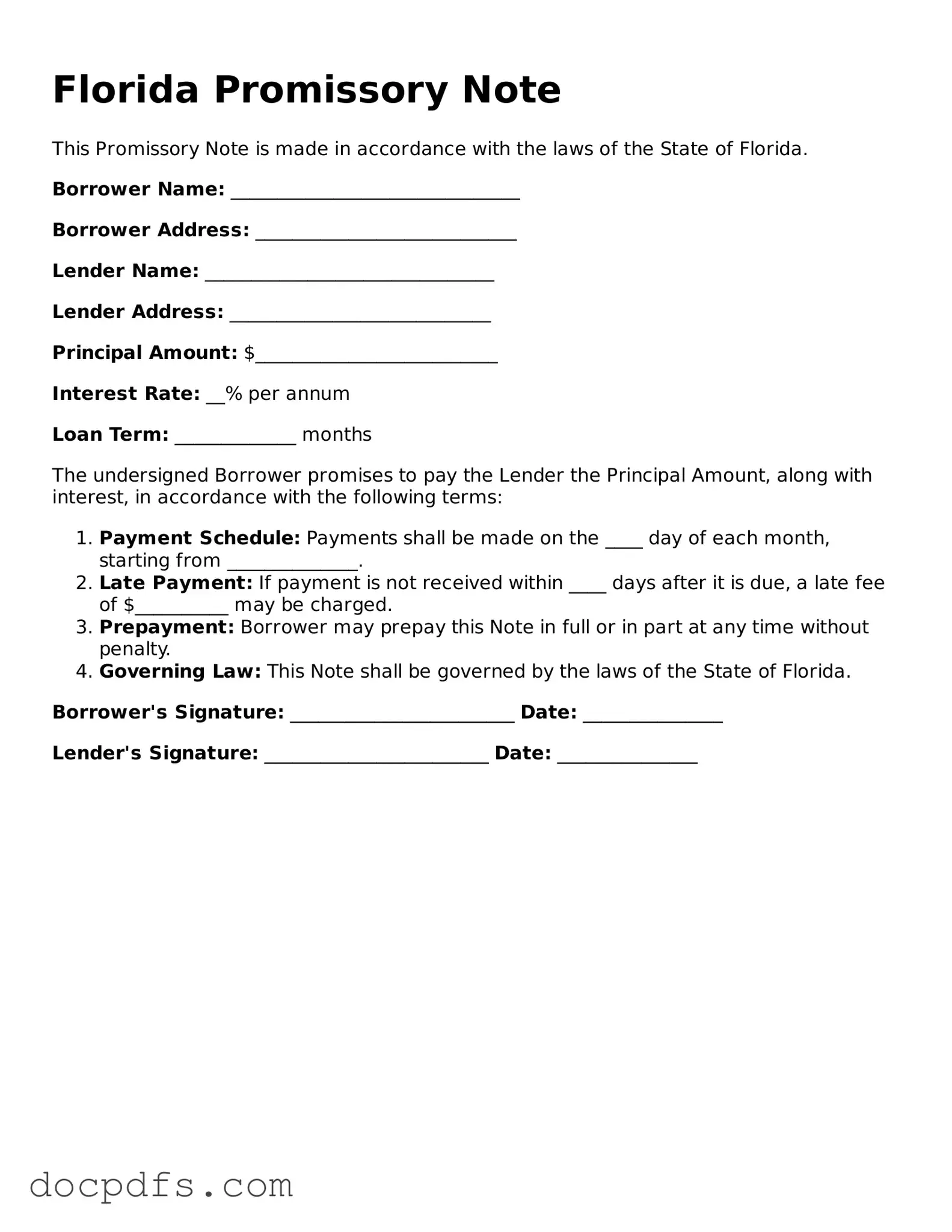What is a Florida Promissory Note?
A Florida Promissory Note is a written promise to pay a specific amount of money to a designated person or entity at a specified time or on demand. This document outlines the terms of the loan, including the interest rate, payment schedule, and any consequences for defaulting on the loan. It serves as a legal record of the agreement between the borrower and the lender.
Who can use a Florida Promissory Note?
Any individual or business in Florida can use a Promissory Note. It is commonly used in various situations, such as personal loans between friends or family, business loans, or real estate transactions. Both the borrower and lender must agree to the terms outlined in the note.
What are the key components of a Florida Promissory Note?
A typical Florida Promissory Note includes the following key components:
-
Principal Amount:
The total amount of money being borrowed.
-
Interest Rate:
The rate at which interest will accrue on the principal amount.
-
Payment Schedule:
Details on how and when payments will be made.
-
Maturity Date:
The date by which the loan must be fully repaid.
-
Default Terms:
Conditions under which the lender can take action if the borrower fails to make payments.
Is a Florida Promissory Note legally binding?
Yes, a Florida Promissory Note is legally binding as long as it meets certain requirements. Both parties must sign the document, and it should clearly outline the terms of the loan. If either party fails to comply with the terms, the note can be enforced in a court of law.
Do I need to have the Promissory Note notarized?
While notarization is not legally required for a Florida Promissory Note to be valid, it is highly recommended. Having the document notarized adds an extra layer of authenticity and can help prevent disputes about the validity of the signatures or the agreement.
Can I modify a Florida Promissory Note after it has been signed?
Yes, a Florida Promissory Note can be modified after it has been signed, but both parties must agree to the changes. It is advisable to create a written amendment that outlines the modifications and have both parties sign it to ensure clarity and legal enforceability.
What happens if I default on my Promissory Note?
If a borrower defaults on a Promissory Note, the lender has several options. These may include:
-
Charging late fees as specified in the note.
-
Initiating collection actions to recover the owed amount.
-
Taking legal action to enforce the terms of the note in court.
It is important for borrowers to communicate with lenders if they are facing difficulties in making payments.
Where can I obtain a Florida Promissory Note template?
Florida Promissory Note templates can be found online through legal document preparation websites, local legal aid organizations, or by consulting with an attorney. Ensure that the template you choose complies with Florida state laws and suits your specific needs.
